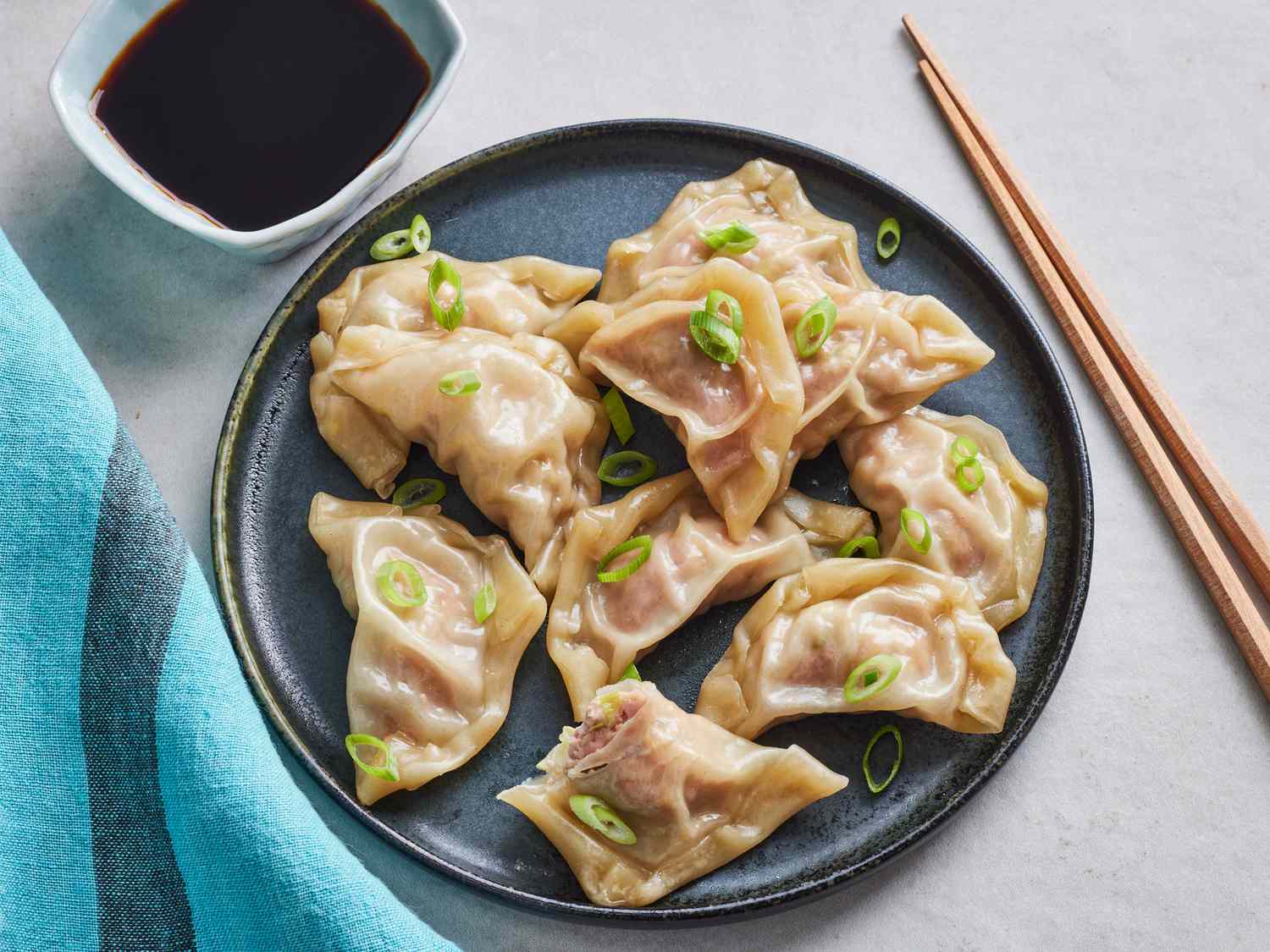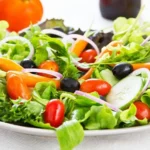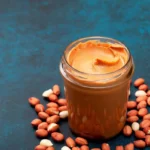
Dumplings are a type of food that can be found in various cuisines around the world. They typically consist of small pieces of dough, often made from flour or a combination of flour and other ingredients, that are shaped and filled with various ingredients such as meat, vegetables, cheese, fruits, or sweets. The filled dough is then cooked by boiling, steaming, frying, or baking, depending on the recipe and cultural preferences.
Dumplings come in a wide array of shapes, sizes, and fillings, reflecting the diverse culinary traditions of different regions. They are known by various names, including “gyoza” in Japan, “ravioli” in Italy, “pierogi” in Poland, “momo” in Nepal and Tibet, and “empanadas” in Latin America, among many others.
These delightful morsels are often enjoyed as a main course, side dish, or appetizer, depending on the preparation and local customs. Dumplings are cherished for their comforting and hearty nature, making them a popular choice for family gatherings, festivals, and special occasions across cultures. Whether served in a flavorful broth, dipped in sauces, or simply enjoyed on their own, dumplings continue to be a beloved culinary treasure worldwide.
Here are some interesting facts about dumplings:
Dumplings have a rich historical legacy that spans over 2,000 years, with their existence documented in Chinese historical records dating back to the illustrious Han Dynasty (206 BCE – 220 CE). As culinary traditions evolved, dumplings continued to be a staple in various cultures, gaining popularity worldwide.
The world’s largest dumpling, a colossal creation tipping the scales at a staggering 1,367 kilograms (3,014 pounds), emerged in Russia in 2014, a feat that left onlookers in awe. This gargantuan masterpiece showcased the enduring allure of dumplings and their ability to captivate both food enthusiasts and record enthusiasts alike.
The prowess of a Chinese chef was immortalized in 2015 when they broke the Guinness World Record for the most dumplings crafted in a mere two minutes, masterfully shaping an impressive 35 dumplings with remarkable speed and precision. This astounding display of culinary skill served as a testament to the artistry involved in dumpling making.
Dumplings have ingrained themselves in the tapestry of cultural celebrations, prominently featured during the annual “Dumpling Festival” celebrated in numerous Asian countries. From the iconic Chinese “zongzi” savored during the Dragon Boat Festival to the beloved Korean “mandu” served during special occasions, dumplings continue to play a vital role in bringing people together during joyous festivities.
The fervor surrounding dumplings during the Chinese New Year reaches unparalleled heights, with an astonishing 4 billion dumplings savored worldwide during the annual celebrations. This massive consumption of dumplings signifies their auspicious significance as a symbol of prosperity and good fortune in Chinese culture, making them an indispensable part of the festive traditions.
Dumplings’ enduring popularity in Eastern Europe is evident in their various regional names, with Poland cherishing the beloved “pierogi” and Russia savoring the delectable “pelmeni.” These delightful dumplings have been cherished for generations, weaving themselves into the culinary heritage of their respective nations.
The beloved Korean dumpling, “mandu,” carries a fascinating historical tale, believed to have been introduced to Korea during the Goryeo Dynasty (918-1392 CE) through vibrant cultural exchanges with China. Its journey across borders showcases how dumplings can transcend geographical boundaries and become beloved in distant lands.
“Gyoza,” the pan-fried Japanese dumplings, demonstrate the culinary finesse of Japanese cuisine, often served with a tantalizing dipping sauce that complements the succulent filling. This culinary fusion exemplifies how dumplings can adapt to local tastes while retaining their essence.
Nepal and Tibet boast their own dumpling delicacy, “momo,” a delectable treat often filled with a delightful mix of meat and vegetables, served with an array of mouthwatering sauces. The cultural significance of “momo” as a symbol of shared joy and gatherings underscores the profound impact dumplings have on communal dining experiences.
Etymologically, the word “dumpling” harks back to its Germanic origins, specifically the Old English word “doppa,” meaning “a lump of dough.” This linguistic link to the past highlights the longstanding history of dumplings and their connection to early human civilizations, where simple dough creations held culinary promise and potential.
Sweden’s traditional “kroppkakor,” featuring grated raw potatoes enveloping savory pork or bacon fillings, offer a delightful taste of Nordic flavors. This unique dumpling variant showcases the ingenuity of using locally available ingredients to create a cherished culinary delight.
Sweet dumplings hold a special place in various cuisines, exemplified by Austria’s delectable “Marillenknödel,” where tender dumplings are filled with apricots and coated in breadcrumbs and powdered sugar. This delightful marriage of sweet and savory showcases dumplings’ versatility as a canvas for both savory and sweet culinary creations.
The popular Filipino street food “siomai” highlights the country’s love for dumplings, often filled with a delectable blend of ground pork, shrimp, and savory seasonings. This beloved snack is a testament to how dumplings have become an integral part of street food culture, enjoyed by people from all walks of life.
Dumplings’ versatility extends beyond savory dishes, as evidenced by the Italian dumpling “gnocchi,” made from potatoes, flour, and eggs, and served with an array of delightful sauces. The delicate balance of flavors in this pasta-dumpling hybrid exemplifies the art of culinary fusion.
Throughout history, dumplings served as a practical solution for food preservation, as they could be easily dried and stored for extended periods. This ancient culinary wisdom reflects the resourcefulness of our ancestors in ensuring food availability during lean times and harsh conditions, highlighting the enduring significance of dumplings in human culture.
The Georgian dumpling, “khinkali,” is a culinary masterpiece known for its delightful spiced meat filling, encased in a doughy exterior. Beyond its exquisite taste, “khinkali” holds cultural significance, as traditional Georgian dining etiquette encourages diners to hold the dumpling by its topknot, avoiding touching the dough, and savoring the flavors within.
Dumplings’ global journey can be traced through history, with Spanish conquistadors believed to have introduced dumplings to the Americas during their explorations. This exchange of culinary traditions highlights how dumplings became a bridge between cultures, leaving an indelible mark on various regions across the world.
Ukraine’s beloved “varenyky” exemplifies the rich diversity of dumpling fillings, with variations ranging from potatoes and cheese to cabbage or sweet fruits. As a cultural icon, “varenyky” brings people together during festive gatherings, transcending generations and connecting Ukrainians to their culinary heritage.
Dumplings have earned their place in folklore and cultural symbolism, often representing good luck, wealth, or family unity during festivals and special occasions. This enduring significance showcases how food can transcend mere sustenance and become intertwined with deeper cultural meanings and values.
In Germany, “Kartoffelklöße,” the large potato dumplings, have stood the test of time as a traditional accompaniment to hearty meat dishes, demonstrating how dumplings can evolve and adapt to complement a variety of cuisines, making them a versatile addition to culinary traditions worldwide.
The Cantonese delight, “Har Gow,” is a testament to the artistry involved in dumpling making, featuring a delicate, translucent dough made from wheat starch and tapioca flour, encapsulating a succulent filling of shrimp and bamboo shoots. This exquisite dumpling is not only a treat for the taste buds but also a feast for the eyes, showcasing the precision and craftsmanship of its creators.
Dumplings have played a significant role in shaping cultural identities, as evidenced by the enduring popularity of the Turkish, Uzbek, and Kyrgyz dish “manti.” Filled with spiced meat and often served with yogurt and garlic sauce, “manti” serves as a culinary symbol of cultural heritage, connecting communities through shared flavors and traditions.
As the world embraces global culinary fusion, dumplings have found their way into a myriad of cuisines, blending seamlessly with local ingredients and culinary techniques. This culinary intermingling highlights the universal appeal of dumplings, transcending borders and inspiring chefs to experiment with innovative and exciting new flavors.
Dumplings have left a mark on popular culture, being featured in various films, books, and artworks, showcasing their enduring influence on human imagination. From the endearing “dumpling” character in Pixar’s animated short film “Bao” to literary references and art installations, these culinary creations continue to inspire creativity and storytelling.
Dumplings have become ambassadors of culinary delights, symbolizing the universality of food as a unifying force. As diverse as the cultures they represent, dumplings reflect the shared human experience of seeking comfort, connection, and joy through food, reminding us that no matter our differences, we can all find common ground around the table.
Dumpling FAQs: A Delicious Deep Dive
Dumplings are delightful pockets of dough filled with savory or sweet goodness, enjoyed worldwide in various forms. Here’s a deep dive into some frequently asked questions:
1. What are dumplings, and where did they originate?
Dumplings are parcels of dough wrapped around a savory or sweet filling. The exact origin is debated, but evidence suggests they appeared in China around the Eastern Han Dynasty (25-220 AD). Similar dishes exist globally, like ravioli in Italy, samosas in India, and empanadas in Latin America.
2. How many types of dumplings are there?
There are hundreds of dumpling variations! Here are some popular types:
- China:
- Xiaolongbao (Soup Dumplings): Delicate parcels filled with flavorful broth and minced pork.
- Jiaozi (Pot Stickers): Pan-fried dumplings with various fillings like pork and cabbage, shrimp and chive.
- Wontons: Thin dumpling wrappers enclosing savory fillings, often served in soup.
- Japan:
- Gyoza: Pan-fried dumplings with fillings similar to Chinese jiaozi.
- Mabo Tofu Dumplings: Spicy tofu and pork filling with a fiery kick.
- Korea:
- Mandu: Steamed or fried dumplings with fillings like kimchi, pork, or vegetables.
- Tibet:
- Momo: Steamed dumplings filled with meat and vegetables.
3. What are the different ways to cook dumplings?
Dumplings are incredibly versatile and can be cooked in several ways:
- Steaming: A gentle method that preserves the delicate flavors and textures.
- Boiling: Similar to steaming, but results in a slightly chewier dough.
- Pan-frying: Creates a crispy bottom and tender top for a delightful textural contrast.
- Deep-frying: Produces a golden brown, crispy exterior.
4. How do I know if my dumplings are cooked?
- Steamed/Boiled Dumplings: They should float to the surface and become translucent.
- Pan-fried Dumplings: The bottoms should be golden brown, and the filling should be cooked through.
- Deep-fried Dumplings: They should be golden brown and buoyant.
5. What dipping sauces go well with dumplings?
Dipping sauces enhance the dumpling experience. Here are some popular options:
- Soy sauce with vinegar and chili oil: A classic combination for most dumplings.
- Sesame paste sauce: Rich and nutty, perfect for pork or vegetable dumplings.
- Spicy chili crisp: Adds a fiery kick to any dumpling.
- Ponzu sauce: A citrusy soy sauce ideal for Japanese gyoza.
6. Can I freeze dumplings?
Absolutely! Freezing is a great way to store homemade or store-bought dumplings. Make sure they are in an airtight container to prevent freezer burn.
7. How do I cook frozen dumplings?
Frozen dumplings can be cooked using the same methods as fresh dumplings (steaming, boiling, pan-frying). You may need to adjust the cooking time slightly depending on the size and filling.
8. What are some vegetarian or vegan dumpling options?
Many dumplings are vegetarian or vegan-friendly. Popular fillings include:
- Vegetables like cabbage, carrots, mushrooms, and bok choy.
- Tofu or tempeh, crumbled and seasoned.
- Lentils or other legumes for a protein boost.
9. Where can I find good dumplings?
Dumplings are widely available at Asian restaurants, dim sum establishments, and even grocery stores. Look for the frozen dumpling section or freshly made options in the refrigerated aisle.
10. Any tips for making dumplings at home?
Making dumplings at home is a rewarding experience. Here are some tips:
- Use high-quality dumpling wrappers for the best texture and results.
- Don’t overfill your dumplings, as they can burst during cooking.
- Moisten the dumpling edges with water to ensure a good seal.
- Practice your folding technique for consistent and beautiful dumplings.
Enjoy exploring the world of dumplings! With their endless variety and delicious flavors, there’s a perfect dumpling waiting for everyone.









